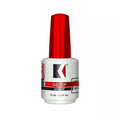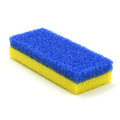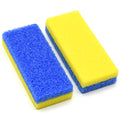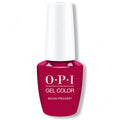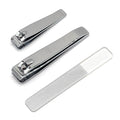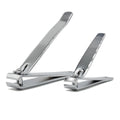How to Get Rid of Nail Fungus on Toes

Toenail fungus, also known medically as onychomycosis, is a common fungal infection that can cause nails to thicken, discolor, and crumble. It often begins harmlessly as a small white or yellow spot under the toenail but spreads if left untreated. Getting rid of nail fungus on toes can take time but is possible with patience and diligence to specific remedies and preventative care.
Identifying If You Have Nail Fungus
The most common nail fungus on toes symptom to watch for is a change in your toenails’ appearance. Pay attention if you notice:
- Thickened, brittle, ragged, or distorted toenails
- Debris building up under nails
- White, black, yellow, or green discoloration
- Darkening at the edges of nails
- Foul odor coming from nails
These changes happen gradually, so inspect your feet regularly to catch fungus early. If your toenail condition worsens or causes discomfort, seek a podiatrist’s evaluation to verify if a fungal infection is the cause.
Read: How to Remove Hard Gel Nails
Using Over-the-Counter Medications
Several over-the-counter antifungal products can combat mild to moderate nail fungus on the toes when used properly and consistently. Look for ingredients like clotrimazole, terbinafine, butenafine, and tolnaftate which are clinically proven to treat onychomycosis.
Topical ointments, creams, powders, and nail polishes with these antifungals are available at pharmacies without a prescription. Choose a product formulated for nails rather than a general antifungal. Apply it evenly over and under the affected nail and surrounding skin as directed. Reapply daily for 48 weeks for full therapeutic effect.
Using an OTC medication requires diligence, but may spare you the time and expense of seeing a doctor for prescription treatment. Monitor your infected nail monthly and switch products if you don’t see improvement after 90 days.
Getting a Prescription Medication
More stubborn or severe cases of nail fungus often need prescription-strength medicine, either oral or topical, to eradicate the infection. Make an appointment with your primary care physician or dermatologist to get evaluated if using OTC treatments unsuccessfully.
Prescribed oral antifungals clear nail fungus from inside out but have more side effects than topical options. Pills like terbinafine and itraconazole attack the infection at its root and prevent recurrence. A standard treatment course runs 12-24 weeks.
Topical solutions and nail lacquers also eliminate fungi with fewer systemic side effects. However, they require digging out debris under nails for maximum effectiveness. Ciclopirox and efinaconazole are commonly prescribed. Use daily for 48 weeks.
In-office procedures like laser therapy or nail removal are other possible prescription treatments for stubborn fungal infections. Discuss all medication and procedural options with your doctor.
Using Natural Remedies
For mild or superficial nail fungus, some home remedies and natural antifungals may help avoid medicated treatments:
Tea tree oil
This essential oil’s antimicrobial properties have some ability to fight toenail fungus. Apply 100% pure oil to clean nails and surrounding skin twice daily using a cotton swab. Limit use if skin becomes irritated.
Apple cider vinegar
Acetic acid in ACV creates an unfavorable environment for fungus. Mix one part vinegar with one part warm water and soak feet for 15-20 minutes per day. Rinse feet afterward and pat dry.
Baking soda
This versatile powder combats fungus with alkalinity. Make a thick paste by stirring baking soda and water. Rub it over and under infected nails before rinsing. Repeat 1-2 times daily.
Vicks VapoRub
The thymol in VapoRub has antifungal qualities. Massage a generous layer over each affected nail nightly. Put socks on afterward to lock in moisture and scent.
Note that these home remedies work slowly. Commit to trying one daily for at least 90 days before judging effectiveness. Combining natural treatments with OTC meds may also boost results.
Learn: 10 Nail Technician Skills: Abilities for Career Success
Preventing the Recurrence of Nail Fungus
Successfully getting rid of nail fungus on the toes doesn’t guarantee it won’t return. Take these preventative steps to avoid reinfection:
- Wear shower shoes in public spaces like pools, gyms, and locker rooms
- Disinfect home pedicure tools after each use
- Fully dry feet, especially between toes, after bathing or swimming
- Apply antifungal powder inside shoes and socks
- Treat athlete’s foot promptly to prevent spread to nails
- Trim nails straight across to avoid ingrown edges
- Get manicures/pedicures from reputable salons practicing sanitation
Staying diligent with preventative care ensures you can enjoy clear, healthy-looking toenails for the long run after overcoming an infection.
Be patient and proactive in trying these methods for eliminating nail fungus on toes. With consistent care, you can get relief from symptoms and avoid transmitting fungus to others. Don’t hesitate to seek medical advice if natural remedies don’t improve the infection. Catching and properly treating onychomycosis early prevents permanent nail damage for good looking bare feet.Sample Block Quote
Nam tempus turpis at metus scelerisque placerat nulla deumantos sollicitudin delos felis. Pellentesque diam dolor an elementum et lobortis at mollis ut risus. Curabitur semper sagittis mino de condimentum.
